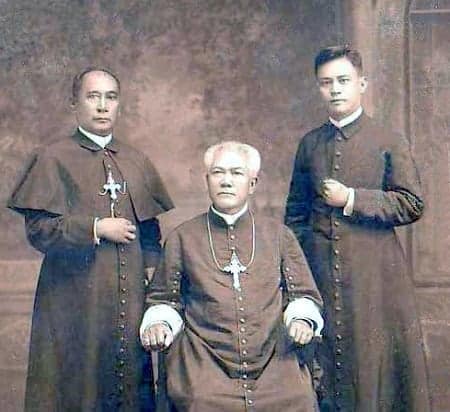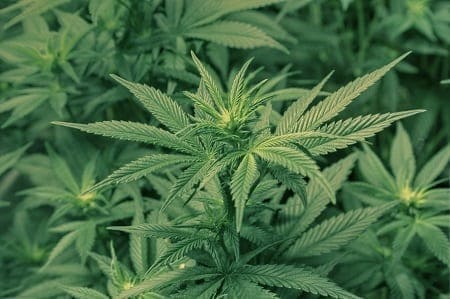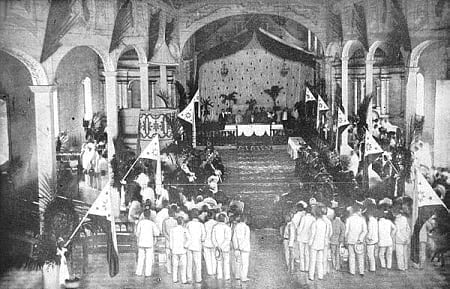9 Things You Didn’t Know About The Catholic Church In The Philippines

As one of the oldest institutions in the country, the Catholic Church carries a lot of history with it. Most of these facts, more often than not, are forgotten either because of our own neglect or because the Church draws attention to itself only when it is in the middle of a controversy.
To correct this oversight, let’s gloss over some of the interesting facts about our very own Catholic Church—facts we’re sure your teacher may have missed out on during history class.
Also Read: 7 Myths About Spanish Colonial Period Filipinos Should All Stop Believing
1. Several hundred priests and nuns (reportedly) joined the underground movement during martial law
Influenced by the growth of liberation theology in the 1960s in South America and Vatican II, many priests and nuns in the Philippines began to take on more active roles in the social struggle for the poor. With the imposition of Martial Law in the 70s, the number exponentially increased.
Recommended Article: 5 Most Badass Filipina Nuns in History
While no exact figures can be given, it is estimated that hundreds of priests and nuns went underground during that period, their roles ranging from covert support to actually fighting with the guerrillas. Later on, some like Frank Fernandez and Conrado Balweg would altogether leave the priesthood and become full-blown communist guerrillas.
2. The Catholic church hierarchy (allegedly) collaborated with the Japanese in WWII
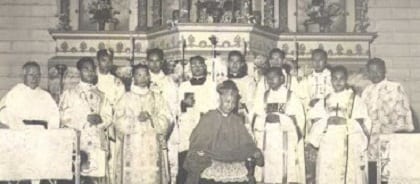
As shocking as it may sound, the top brass of the Catholic Church allegedly encouraged collaborating with the Japanese during World War II. The foremost proponent of Filipino-Japanese cooperation was said to be Manila auxiliary bishop Cesar Ma. Guerrero who reportedly extolled the benefits of being under a “sister Oriental nation.”
Also Read: 10 Facts About World War II That Never Made It To Your Philippine History Books
In fairness, the bishop came from the prominent and nationalist Guerrero clan, his father none other than the famous revolutionary and botanist Leon Ma. Guerrero. As a result of his nationalist upbringing, Guerrero most likely approved the end of American rule and hoped the new Japanese occupation give the Philippines the independence it so desired.
Also, not all clergymen favored cooperating with the Japanese. Several, including Rufino Santos (the first Filipino archbishop of Manila), ended up in prison for helping the guerrillas. He was almost executed too but was fortunately saved at the last minute by Filipino-American forces.
3. The Catholic church almost lost half of its properties in the Revolution
While discrimination by the Spanish members of the Catholic Church against secular priests and the native population invariably contributed to the Revolution, there is little discussion of what happened to the Church other than its eventual disestablishment.
Also Read: President-elect Duterte on religion and being “sexually abused as a child.”
In the initial war against the Spanish and later on against the Americans, the Church fell into disarray, with several Spanish clergymen either killed or imprisoned by the revolutionaries.
Also, nearly one-half of the Church’s properties were taken over by the Philippine Independent Church led by Gregorio Aglipay who at one point said over half of the population had defected to his church.
The announcement proved to be premature, however, as the Supreme Court decisively ordered the Aglipayans to return all the property they seized from the Catholic Church in 1906.
4. Before the RH law, there was the Rizal law
For all the controversy generated by the Reproductive Health Law, it still arguably pales in comparison to the hullabaloo of Republic Act 1425, better known as the Rizal Law.
The bill, which required public and private schools to teach Jose Rizal’s Noli Me Tangere and El Filibusterismo, was heavily opposed by the Catholic Church and its allies on the grounds it attacked Church dogmas, beliefs and practices.
Supporters of the bill, however, countered that the Catholic Church was trying to suppress the memory of Rizal and his teachings. Arguments became so heated that at one point, church authorities threatened to close down their schools.
However, the unfazed Senator Claro M. Recto (the bill’s author) dared them to go ahead so the State could take over.
Also Read: 9 Reasons Why Rizal Was Just As Human As The Rest Of Us
In the end, the bill became law on June 12, 1956, with the Church somewhat placated by a provision stating only college students would have access to the two novels’ unexpurgated versions. To date, there has been no record of a student choosing to exempt himself from reading the novels.
5. It also has an office of exorcism
As the only one office of its kind in the country, the Office of Exorcism—stationed at the Manila Archdiocese—was formed in 2006 to combat what the Church saw as the ever-growing number of cases involving “demonic attacks and possessions.”
Also Read: The Exorcism of Clarita Villanueva
The office is headed by Fr. Jose Fransciso Syquia who, along with less than a dozen priests in the country, is fully authorized to conduct exorcisms. And for those skeptical of Syquia’s occupation, his office contains hundreds of videotapes documenting several cases of alleged demonic possession and his attempts to exorcize the victims.
6. The Archdiocese of Manila is one of the world’s wealthiest
How rich is it? We may never know the exact number since Church officials won’t disclose the Church’s financial records to the public, but it is estimated to run in the tens of billions of pesos.
Also Read: 9 Surprising Things You Didn’t Know About Imelda Marcos
Aside from donations from the faithful, other sources for the Archdiocese’s wealth are believed to come from its assets including bonds, foreign currency deposits, stock investments, and real estate.
7. The Catholic church supports (medical) marijuana
Although the Catholic church frowns on the use of any illegal drugs including marijuana, it supports the use of the latter insofar as it will alleviate the suffering of patients.
Specifically, Catholic Bishops’ Conference of the Philippines (CBCP) President Lingayen-Dagupan Archbishop Socrates Villegas has explained that “Catholic health care ethics in fact consider as morally justifiable the use of marijuana for terminal cancer patients in severe pain.”
Also Read: Top 10 Pinoy Health Myths You Thought Were True
Unfortunately, for advocates of recreational marijuana use, the Catholic church has remained firm on its position on illegal drugs: don’t do it.
8. A single vote decided the separation of Church and State
While the Americans would implement it anyway during their occupation of the country, the Filipinos decided for themselves once and for all the separation of Church and State during the 1898 Malolos Congress.
Debates raged on back and forth as anti-separatists led by Felipe Calderon squared off against the pro-separatists led by Tomas del Rosario. The voting itself was close, with the first round a tie. In the second round, the pro-separatists won by the slimmest of margins—a single vote.
Also Read: 9 Philippine Government Agencies That Need To Reform Right Now
The tiebreaker was given by Pablo Tecson, a KKK leader and an officer in the Philippine Republican Army who ironically used to work as a writer for the Spanish-era publication “Catholic Periodical Guide.” With the decisive win, the separation of Church and State forever became enshrined in the country’s succeeding Constitutions.
9. Our first documented serial killer was a Catholic priest
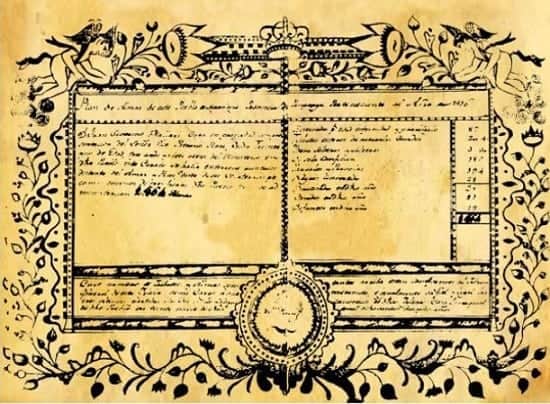
While serial killers are a dime a dozen in other countries, they are virtually unheard of here in the Philippines. However, that does not mean to say we’ve never had one before.
During the Spanish era, a man by the name of Juan Severino Mallari was accused and convicted of killing at least 57 people in the town of Magalang, Pampanga of which he was the parish priest over a ten-year period, from 1816 to 1826.
While details of the murders were never given, they were of such a gruesome nature that the Spanish authorities didn’t consider the fact that Mallari exhibited signs of mental illness (he believed by killing his victims, he could free his mother from being “bewitched”).
In the end, the Spanish hanged Mallari in 1840. Incidentally, it also made him the first indigenous priest to be killed by the government, his execution preceding the Gomburza’s by 32 years.
References
Archdiocese of Manila Office of Exorcism Website,. (2014). About Archdiocese of Manila Office of Exorcism (AMOE). Retrieved 22 June 2015, from http://goo.gl/wv7gBv
Area Handbook for the Philippines. (1976). Washington, D.C.
InterAksyon.com,. (2011). TODAY IN HISTORY: In 1898, new PH govt declares separation of Church and State. Retrieved 22 June 2015, from http://goo.gl/hcmXIJ
Ocampo, A. (2007). The fight over the Rizal law. Philippine Daily Inquirer, p. A15. Retrieved from https://goo.gl/cSIdWk
Parpan, A. (1989). The Japanese and the Philippine Church, 1942-45. Philippine Studies, 47(4), 451-466. Retrieved from http://goo.gl/bTI52M
Perez, E. (2015). Manila Archdiocese’s paper wealth in BPI tops P30B. The Manila Times. Retrieved 22 June 2015, from http://goo.gl/GO1pYK
Philippine Daily Inquirer,. (2004). They changed the course of history, p. A20. Retrieved from https://goo.gl/WK5yaC
Ramirez, R. (2014). CBCP president supports medical marijuana use. The Manila Times. Retrieved 22 June 2015, from http://goo.gl/yVtLmy
Robb, E., & Robb, J. (1986). The Betrayal of the Church. Westchester, Illinois: Crossway Books.
Additional Sources
Philippine History by Christine N. Halili
Rizal & the Development Of National Consciousness (Second Edition) by Ma. Corona S. Romero, Julita R. Sta. Maria, Lourdes Y. Santos
Dancing with the Devil: The Making of the Mormon-Republican Pact by Jonathan H. Moyer
Philippines in World War Two, 1941-1945 by Walter F. Bell
The Blue-Eyed Enemy: Japan Against the West in Java and Luzon, 1942-1945 by Theodore Friend
A Changeless Land: Continuity and Change in Philippine Politics by David G. Timberman
FilipiKnow
FilipiKnow strives to ensure each article published on this website is as accurate and reliable as possible. We invite you, our reader, to take part in our mission to provide free, high-quality information for every Juan. If you think this article needs improvement, or if you have suggestions on how we can better achieve our goals, let us know by sending a message to admin at filipiknow dot net
Copyright Notice
All materials contained on this site are protected by the Republic of the Philippines copyright law and may not be reproduced, distributed, transmitted, displayed, published, or broadcast without the prior written permission of filipiknow.net or in the case of third party materials, the owner of that content. You may not alter or remove any trademark, copyright, or other notice from copies of the content. Be warned that we have already reported and helped terminate several websites and YouTube channels for blatantly stealing our content. If you wish to use filipiknow.net content for commercial purposes, such as for content syndication, etc., please contact us at legal(at)filipiknow(dot)net


